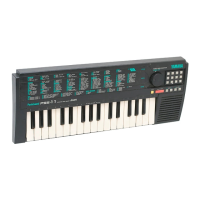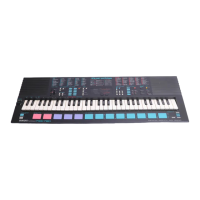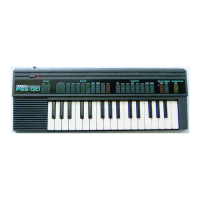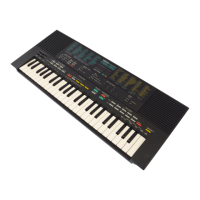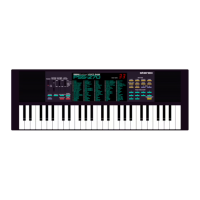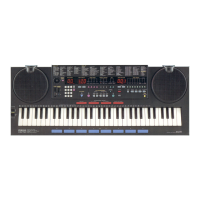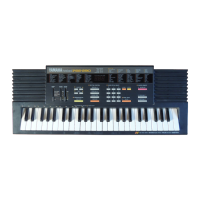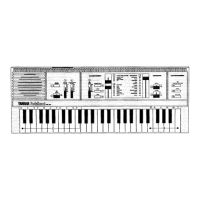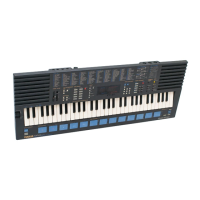
Do you have a question about the Yamaha PortaSound PSS-680 and is the answer not in the manual?
| Type | Portable Keyboard |
|---|---|
| Brand | Yamaha |
| Model | PortaSound PSS-680 |
| Number of Keys | 61 |
| Sequencer | Yes |
| Speakers | Yes |
| Display | LCD |
| Effects | Reverb, Chorus |
| Power Supply | Batteries or AC adapter |
| Polyphony | 12 |
Explains the manual's structure and how to use it for quick learning.
Covers powering the unit, basic playing, and using the demonstration song feature.
Covers location, handling, cleaning, electrical, and environmental safety measures.
Identifies and labels the main functional sections of the keyboard's control panel.
Guide to choosing preset voices, understanding polyphony, and playing along with demo songs.
How to select instrument sounds, add effects, and use the pitch bend wheel.
Explains automatic accompaniment, rhythm selection, tempo, and orchestration.
Details on using hand percussion pads and rhythm variation techniques.
Visual guide mapping controls to page numbers for quick reference.
Overview of the keyboard's core functions, including voice, rhythm, and auto accompaniment.
Instructions for audio connections, selecting voices, and playing along with the demo song.
Explains effects like Vibrato, Sustain, Reverb, and Portamento, including their adjustment.
How to use the pitch bend wheel and adjust its range for expressive playing.
Explains how to access and adjust parameters like Transpose, Tuning, and Volume.
How to choose rhythm styles and operate the rhythm section using START/STOP and SYNCHRO START.
Details on stopping rhythms, using Intro/Fill-in variations, tempo control, and beat display.
Explains using hand percussion pads, selecting drum sets, and the Synchro Break function.
Step-by-step guide to creating and saving unique rhythm patterns from scratch.
Explains different Auto Accompaniment modes and how to control orchestration elements.
How to play major, minor, and seventh chords using the Single Finger mode.
Using single finger and fingered modes for automatic accompaniment.
How to play a second harmonizing voice alongside your melody.
Storing and managing melodies, including memorizing data like voice and effects.
Details on data stored in chord memory and how to record chord progressions.
Covers the digital synthesizer section, including FM synthesis basics.
A summary of all synthesizer parameters, their functions, and value ranges.
Defines MIDI and its role in connecting musical instruments for communication.
Explains the MIDI IN, OUT, and THRU connections on the PSS-680.
Practical examples of hooking up the PSS-680 with other MIDI equipment.
Explains the purpose of the all reset function and step-by-step instructions for performing it.
Lists technical specifications for the keyboard, including keys, voices, styles, and dimensions.
Details the format for exclusive MIDI data, specifically for FM voice data.

